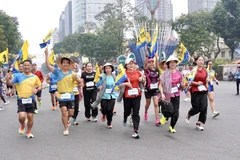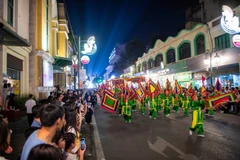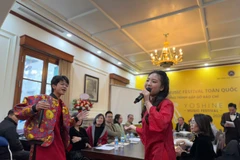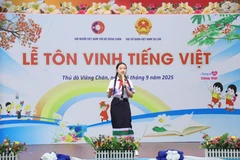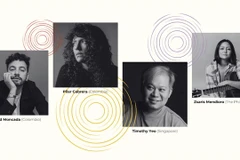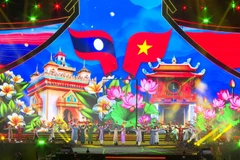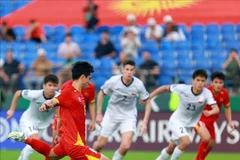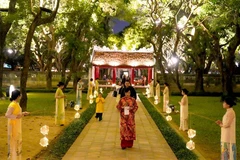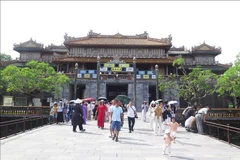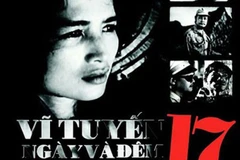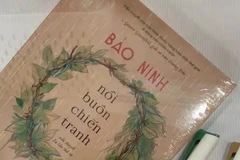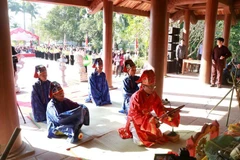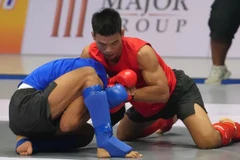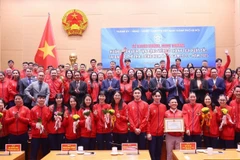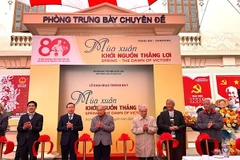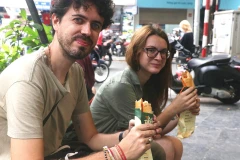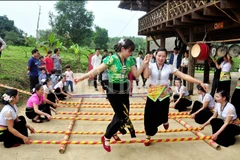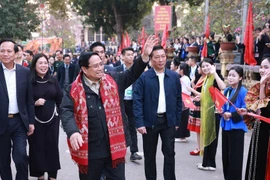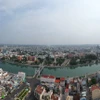 Ngo Mon (Meridian Gate, also called South Gate), the main gate to the Imperial Citadel City of Hue, is a tourist attraction and shooting location for many filming makers. (Source: VNA)
Ngo Mon (Meridian Gate, also called South Gate), the main gate to the Imperial Citadel City of Hue, is a tourist attraction and shooting location for many filming makers. (Source: VNA) Hanoi (VNS/VNA) - Hue city in the central province of Thua Thien-Hue is potentially a giant film studio amid a widespread lack of locations for shooting historical movies.
With natural landscapes and ancient architectural sites, filmmakers see Hue as their number one option. However, the question is how to exploit that advantage to benefit both film producers and local authorities.
Celebrated movies like Co Gai Tren Song (The Girl on the River), Dong Duong (Indochina), Ngon Nen Hoang Cung (The Royal Candle) and Dong Song Phang Lang (The Quite River) were all partially shot in Hue.
Nang Dau Xu Hue (The Bride of Hue City) is a project currently being shot in the central city.
The Bride of Hue City is part of a project to promote Hue tourism via cinema which was launched in June.
It is also is the sequel to the project Nang tho xu Hue (The Muse of Hue), which cast included Miss Tourism Hue 2015 Le Tran Ngoc Tran, and ward played on domestic and international flights of Vietnam Airlines and Korean KBS World television channel since January of 2019.
The 20-episode long The Muse of Hue introduced the culture, cuisine, tourism and lifestyle of the city and Vietnam, and was shot at beautiful spots like Phuoc Tich ancient village and An Hien garden house.
Mat Biec (Blue Eyes), a movie by Vietnamese overseas director Victor Vu, scheduled to be shown this Christmas, also has many scenes shot in the city and Ha Cang village, Quang Dien district.
Although the city has become an ideal filming location for many movie makers, they have to think twice about choosing it.
Making a cinematic work in Hue, including movies about the city or just a scene shot in Hue, is not simple.
Movies needed to illuminate particular features of the city, with the cast having the city’s characteristics.
According to screenwriter Tran Thuy Mai, two of the main reasons for producers are weather and accent.
“It rains a lot, and it has a bad impact on the shooting procedure.
"Moreover, modern films are made by recorded directly instead of dubbing like before.
"Very few actors can do a Hue accent, since it is one of the hardest accents to do,” said Mai.
Making Hue a film studio is a win-win for both film makers and local authorities, giving producers a stunning backdrop and enhancing the city's image.
However, according to many directors, there is a need for co-operation among producers, the city’s People Committee and Hue World Heritage Centre, alongside encouragement and good conditions for film makers by authorities to help them promote the city.
Four years ago, to shoot some scenes of the movie Thai Su Tran Thu Do (General Tran Thu Do), the crew made a few direct changes to Sung An Temple in the Tomb of Emperor of Nguyen Dynasty Minh Mang, and turned the whole space to a palace of another unknown empress of the Ly Dynasty.
This angered the descendants of the Nguyen Dynasty, culture researchers and citizens of Hue. Director of the movie, Nguyen Tat Binh, later explained to local media that the changes were approved by the Ministry of Culture and Information.
Director of Hue World Heritage Centre Phan Thanh Hải said after the case of the Minh Mang Tomb, the centre learnt a lesson and there would be tight security to assist movie crews on making films inside chosen locations in the city./.



